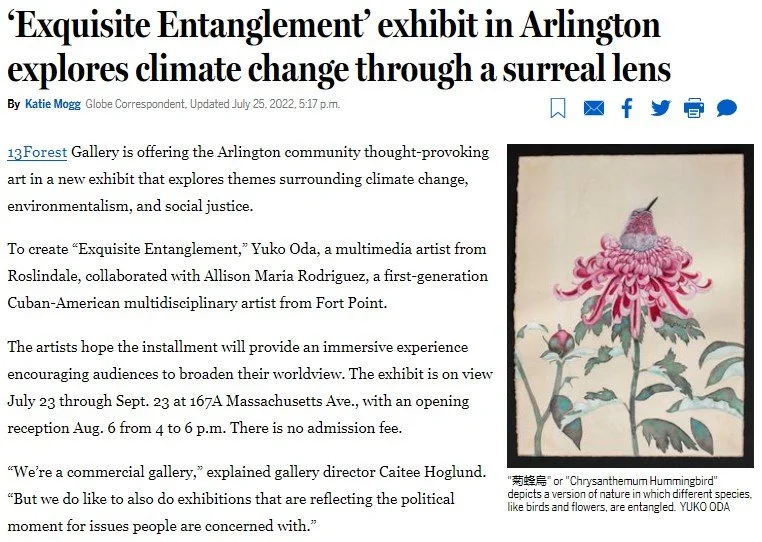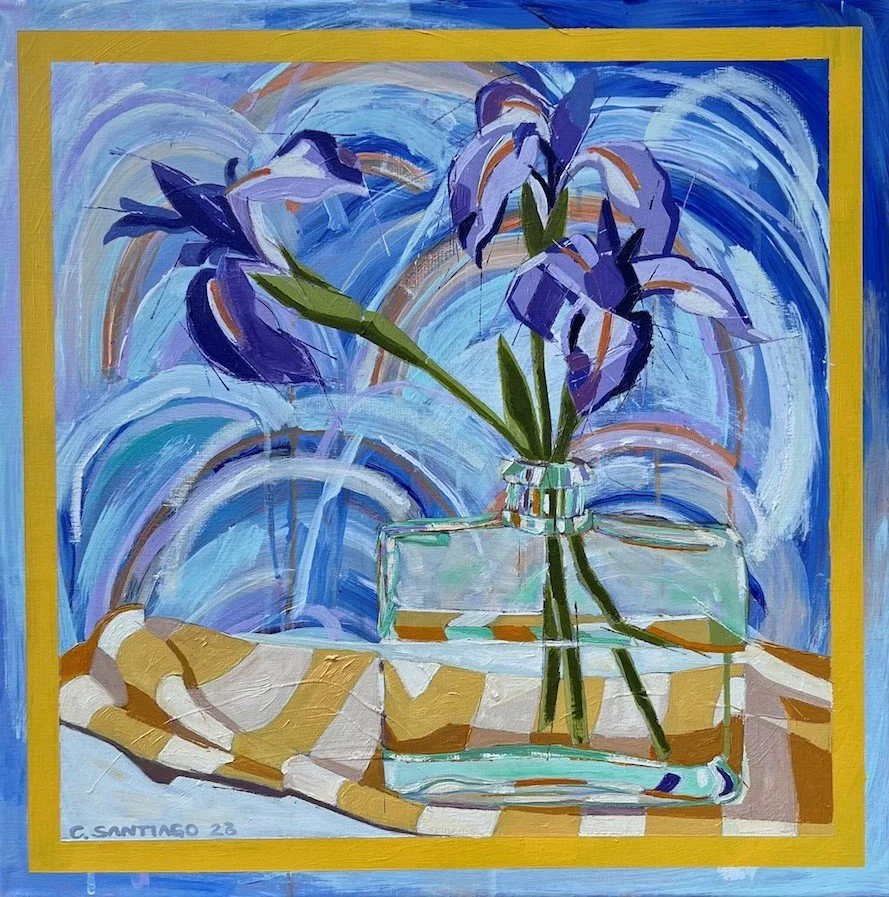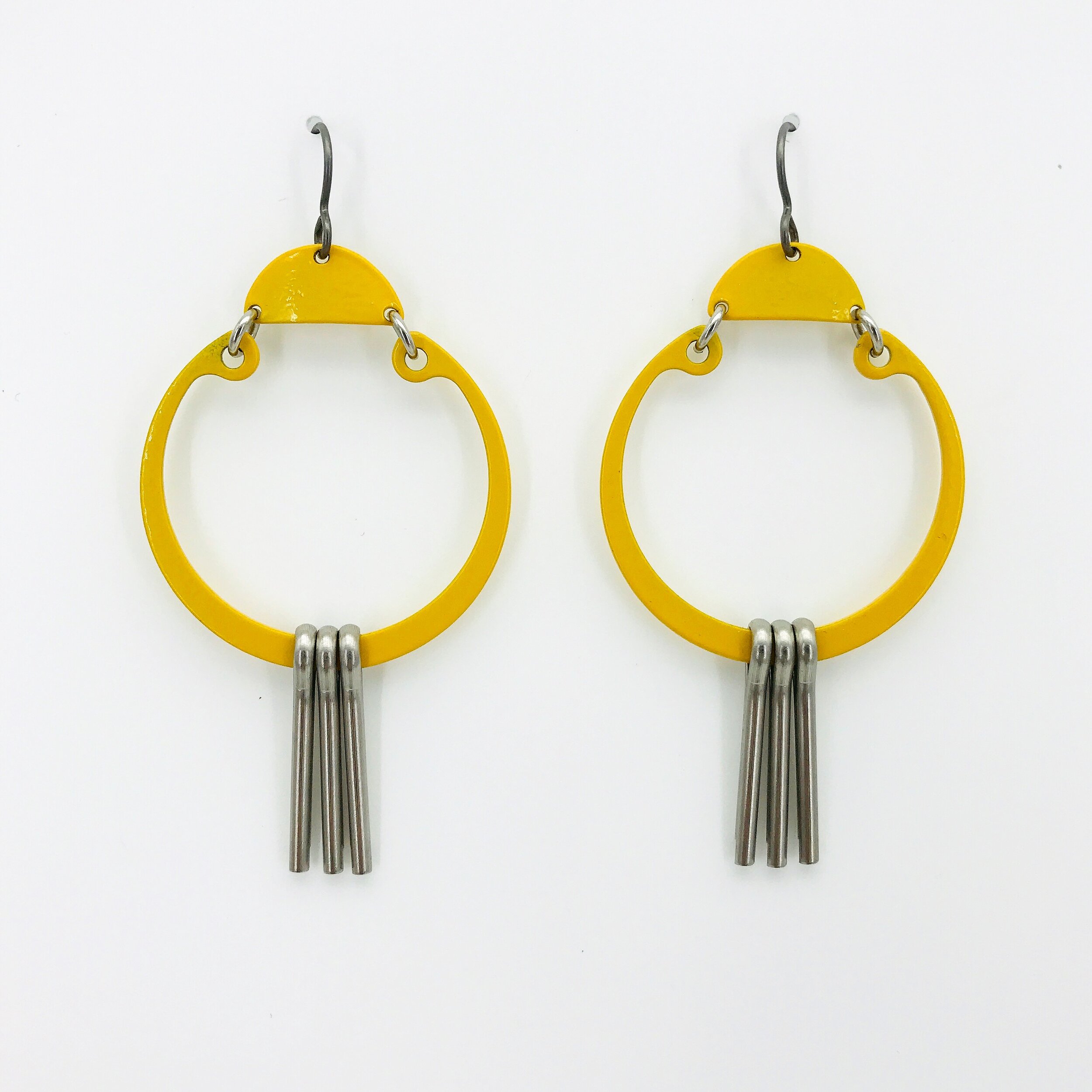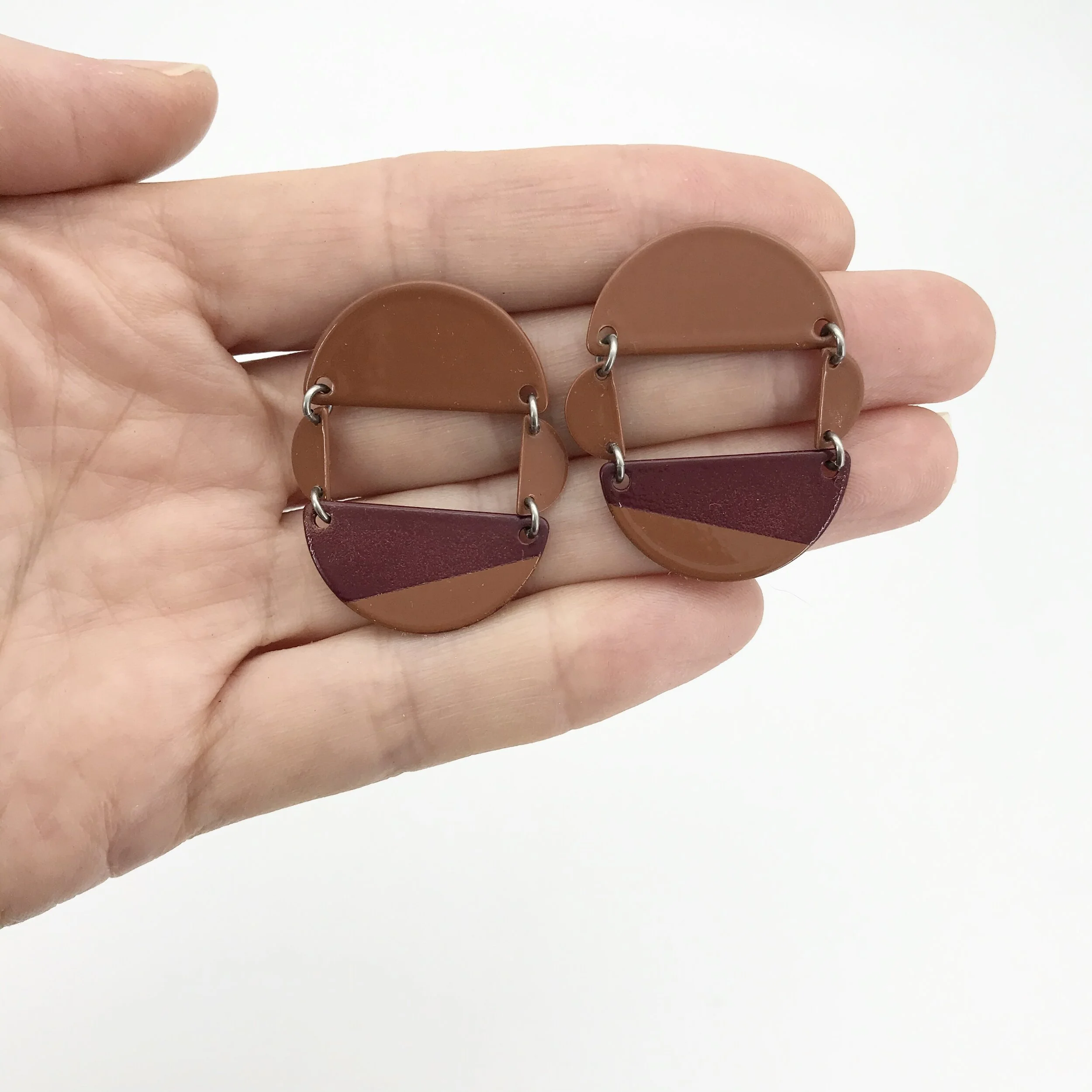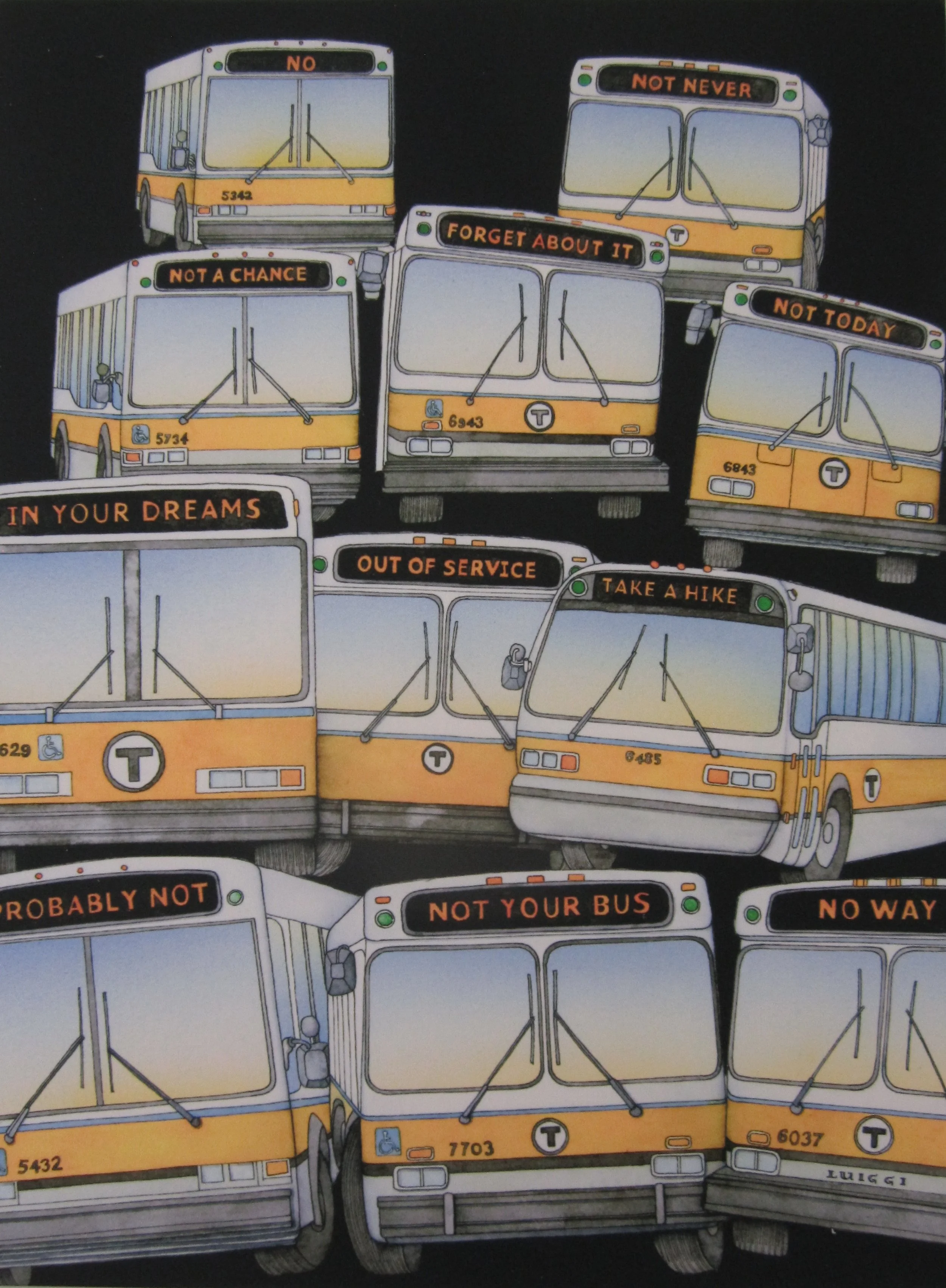Tom Nealon, friend of artist Yuko Oda, stopped by 13FOREST to see her work in our current exhibition Exquisite Entanglement, which also features Allison Maria Rodriguez. He wrote up his experience of the exhibition and the thoughts it provoked in an essay we have included below.
Tom Nealon is the owner of Pazzo Books, a rare bookshop in Roslindale, and the author of Food Fights and Culture Wars: A Secret History of Taste (British Library and Overlook Press). He writes about food and pop culture at HiLobrow.com.
Yuko Oda’s installation Əvolution in the window at 13FOREST
Beside the main display of the gallery exhibition Exquisite Entanglement of the work of Yuko Oda and Allison Maria Rodriguez at 13FOREST Gallery in Arlington, is Əvolution, Oda’s installation of dead leaves being replicated by drops of resin and transmogrified into the floating simulacrum of leaves. It is a useful template of this exhibition, which as a whole struggles to identify whether art imitates life (the classic Aristotelian conception), life imitates art (as Oscar Wilde once famously claimed) or something in between. Exquisite Entanglement deals centrally with what to do about humanity’s impact on the environment and, ultimately, what is to be done with humanity. It is a vital question: does art just reflect that world back to us, trusting us to do something with that reflection, or is it a model itself, a path out of this mess? 3D printed leaves hang there, translucent but uncannily real, above the brown flecked leaves from last autumn, the clear resin dripped between, mutely asking not just what is real, but how and why?
Yuko Oda, Full Bloom, Japanese mineral pigment on paper
Oda’s work — done in an ostensibly classical Japanese style with traditional pigments — depicts birds and flowers engaged in a symbiotic battle against crystalline elements that, in one series, sees beams of light blowing hummingbirds into picturesque clouds of bird parts. Elsewhere, hummingbirds, flowers and butterflies interact in visually appealing but psychologically troubling fashion: butterflies drink nectar from hummingbird-flower hybrids, with their proboscises stuck down the bird’s throats as they stare, blank eyed at the sky (Full Bloom, Japanese mineral pigment on paper). Is it the interconnectedness of all things that we are seeing played out, or something more nefarious? Despeciation? There is a cybernetic quality to the birds (their eyes seem like digital screens full of static) that also complicates direct sense making. Are they products of a dangerous brush with technology/humanity that left some blown to bits, some merged with flowers (Survival of the Fittest, Japanese mineral pigment on paper; where the “fittest” birds dodge the rays of light)? This ambiguity is one of the elements that makes Oda’s work resonate. While the style, medium and subject seem to suggest a familiar sort of symbolic painting, the images themselves are resistant to being turned directly into symbols, so they linger in our consciousness as we try to situate them. They are at once comfortingly familiar and confoundingly unknowable. The bolts of alien but seemingly still-natural light, the seemingly natural but somehow alien birds, flowers and butterflies together make a dialectic that is fiendishly difficult to resolve.
It is tempting - and I’ve clearly not resisted this temptation — to put a chronology to the paintings, turn it into a sort of Bayeux tapestry of bird-flower-crystal interaction. For example, birds fly around and get blown up by beams of crystalline energy. Some of the birds dodge the beams and live on to grow multiple heads (to better see exploding light beams, possibly), butterflies grow multiple wings, birds merge with flowers rather than fly around them and risk getting destroyed. Butterflies evolve a symbiotic (or parasitic?) relationship with the bird flowers, possibly leading them to new evolutionary frontiers. Birds and flowers form a sort of natural-aesthetic singularity and drift off into space either escaping or surviving the Anthropocene.
Allison Maria Rodriguez’s installation Once in a Lifetime
In the middle of Oda’s paintings, set off as a discrete room, Allison Maria Rodriguez’s Once in a Lifetime, runs a video of a remarkable scene of a stranded juvenile blue whale on a beach in Costa Rica. The title comes from scientists at the site who repeatedly stated that viewing the whale was a “once in a lifetime opportunity.” Of course, the title has a somewhat different tenor from the whale’s point of view. My initial reaction to the installation was that it was a powerful way to engage viewers’ feelings. I’ve been thinking a lot of the reason/feeling dichotomy, especially with our Balkanized political situation, Covid, and climate change humming along, and how resistant to both reason and feeling we’ve become, how impoverished in both imagination and empathy. The Scottish philosopher David Hume believed that human reason and feeling had to work together, that reason never does anything by itself and feeling is a sort of directionless, inchoate cloud – powerful, but without a vector. We know and have known all sorts of things about climate change, but without the necessary feeling. All of that information is like junk mail piling up below a mail slot. The enduring question, of course, is how do you get reason and feeling to work together when so much energy has gone into separating them?
At first my eyes didn’t want to leave the whale in the video. For the whole of the first viewing, I contemplated its vast grayness (the beach and whale are desaturated to a bland gray contrasting with a brilliant blue sky) and I stared into its nearly closed eye trying to see…something. It’s a powerful thing even when experienced as surface without any interpretation. But it’s not an ecology commercial, and after watching a second time I started to see past the whale and the full weight of the scene began to mount. I could pick out from the image a rush, at some point in the near past, to save the whale: the construction equipment, the caution tape, the people milling around. I entered the scene after everyone had sped to an emergency and found…nothing happening. The whale lay on the beach as the focus of my attention but no longer theirs. They mill around the earth-moving vehicles parked and caution tape fluttering in the wind. Only dogs someone has brought to the scene — for a walk, or to pay their respects, or because they happened by, we can only guess — move on either side of the taped-off whale, appropriately, I’d add, since they are animals but bound to humanity — not wild but not really implicated. At one point one of the dogs walks past the tape and seems suddenly surprised by the whale, tenses as if ready to fight or play, but then recovers and wanders off. I watched that moment a few times — we are so used to applying our anthropomorphic sensibilities to dogs and nowhere is this more appropriate. We all are this dog, fleetingly aware of some huge and surprising event and then, almost immediately, returning to our daytime somnambulance.
Allison Maria Rodriguez, detail from Once In a Lifetime, video installation
Once in a Lifetime is the story of this whale - beached, dead, allegory of climate change — a seemingly unavoidably large problem that has become, quite quickly, something to edge around and ignore. Is humanity the whale on the beach, our rotting corpse a cause for alarm until it fades away? We’ve all heard the attempted parallels to aid our understanding of climate change: slow-motion apocalypses and imagined asteroid impacts, hundred-year storms that arrive monthly, frogs in pots of boiling water, and ants on a log. Somehow we’ve digested all of it without taking much action. I mean, the rich folks are all planning their terraforming of Mars, but what are we actually doing?
Allison Maria Rodriguez, detail from Once In a Lifetime, video installation
Another panel that is part of Rodriguez’s video shows baby turtles struggling through the surf to reach the ocean. Unlike the video of the beach and the whale, this one is in Caribbean tones and shows nothing else on the beach except for water, the turtles and some washed-up coral. Alone it’s a nice rendering of a nature vs nature moment, but in context it enfolds a similar and similarly ambiguous message to Oda’s space flowers. Nature will struggle onward and it is up to humanity to decide on how the Anthropocene ends. Will it be the end of the human race, or the end of our dominion over Earth? The planet, Oda and Rodriguez tell us, does not wait for our answer.
We are, more so than ever, plagued by our limitations. Limitations to our imaginations, to our empathy, limitations to the figures of speech we deploy to explain our situations; our metaphors are lousy, our synecdoches, oblique. Limitations to our reasons and limitations to reason itself — what is the point of understanding something if the answer just sits unnoticed? Limitations to our feelings: vast and pointless, focused and too limited, lead us off in quixotic crusades against phantoms. Is art some sort of magic to escape these inadequacies? No. Yes. Sure it is. We all know about climate change, we all feel things about climate change, but compared to the size and universality of the problem, the reaction to it has been deliriously small. Oscar Wilde,around the same time as he told us that life imitates art, also said that art is quite useless. This seemed like a hedge when I first read it as a teenager, but now seems more like an invocation, an attempt to separate art from the world of the merely useful and place it somewhere else. It might seem strange to wonder whether birds and flowers and beached whales can change the world, might even seem a little desperate, but there is no shame in acting desperate during desperate times.







